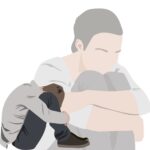Body dysmorphic disorder (BDD) – also simply known as body dysmorphia – as a condition in which a person is fixated on what they think is wrong with their appearance when to others around them, there may not be an issue with their appearance.
BDD is a common mental illness. However, it is often not recognized. The American Psychiatric Association’s Diagnostic and Statistical Manual of Mental Disorders, Fifth Edition Text Revision (DSM-5-TR) notes that someone experiencing body dysmorphia overwhelmingly focuses on perceived flaws in the body, which can lead to upsetting repeated behaviors.
In some cases, this can lead to suicidal thoughts and actions. Moreover, people who have BDD often seek surgery – often plastic surgery – that is not necessary.
The Italian doctor Enrico Morselli first talked about BDD more than 100 years ago. He came up with the word “dysmorphophobia,” which comes from the Greek word “dysmorphia,” which means “ugliness.” However, there is evidence that it is still not being identified enough.
The Causes of Psychosocial Problems in Body Dysmorphia
The current empirical evidence notes that the obsession, the stress that comes with this obsession, and the worry of social rejection almost always causes problems in one or more areas of social, professional or academic performance.
Patients may avoid close relationships, stop going to school or work or social gatherings. They could also find it extremely difficult to leave their homes often due to self-critical thoughts or fear of judgment. A lot of people with BDD also think about killing themselves. A new meta-analysis found that people with BDD were four times more likely than people without BDD to have suicidal thoughts and 2.6 times more likely to try to kill themselves. Additionally, sources report that 7.4% of people who work in mental health settings have BDD while in cosmetic and skincare settings, the rate of incidence is higher (20.0%).
A lot of different mental illnesses have been linked to BDD. The most common ones are major depressive disorder, social fear, obsessive-compulsive disorder, and drug abuse disorders. A person may be diagnosed with another problem along with their BDD, but the BDD may not be picked up, so they do not get the right care they need.
Not recognizing BDD could make the negative effects much worse, especially since the delay in treatment could mean that the dysmorphia persists for much longer than it normally would.
Hence timely diagnosis and management of the disorder is crucial.
So, how do you diagnose body dysmorphia?
The following are the diagnostic criteria and features of BDD in light of DSM 5 TR.
Symptoms of Body Dysmorphia/Dysmorphic Disorder
Below are the diagnostic features of BDD as detailed in the DSM 5 TR:
- Being preoccupied with one or more flaws or faults in one’s look that others don’t see or think are not important.
- At some point during the disorder, the person has done repeated actions or thoughts (like looking in the mirror, over-grooming, picking at their skin, or looking for confirmation) because they were worried about how they looked around other people.
- The obsession causes pain or poor performance in social, professional, or other important areas of functioning that are clinically significant.
- The obsession with looks cannot be explained by worries about body fat or weight in a person whose symptoms meet the standards for an eating disorder.
Note: Finding flaws with(in) one’s body is more common than one could think. However, having this psychiatric disorder entails that the person experiences significant problems in keeping up routines, following through social interactions or duties and/or could end up hurting themselves.
Specifiers of Body Dysmorphia
These specifiers exist to help clinicians categorize the individual and how their treatment could be informed.
With muscle dysmorphia:
What is muscle dysmorphia? Someone with this specific body dysmorphic disorder is obsessed with the idea that their body is too small or not strong enough. It is okay for the person to be focused on other parts of their body; this specifier is still used if it has to do something with ‘muscle’.
With good or fair insight: If someone has a good or fair understanding, they know that their body dysmorphic disorder views are either definitely false or probably false, or they know that they may or may not be true.
With poor insight: With little or no understanding, the person believes that the views about body dysmorphic disorder are most likely true.
With absent insight/delusional beliefs: If someone has missing understanding or delusional beliefs, they are sure that their body dysmorphic disorder beliefs are true.
You could assess your insight into your problem by rating how much you understand about the beliefs that cause body dysmorphic disorder, such as “I look ugly” or “I look deformed.”
Diagnostic Features of Body Dysmorphia
Some of the features that might help your clinician see whether you have body dysmorphic disorder are given below. These are the patterns of behaviors which contain symptoms that trained mental health professionals can detect. This information could also be useful if you want to personally see if someone is at risk of body dysmorphia.
The first feature is quite clear: body dysmorphic disorder causes people to obsess about one or more physical imperfections they perceive make them ugly, unpleasant, strange, or deformed (Criterion A given above).
Others might view many of these issues as minimal – or not be able to identify them.
Furthermore, the person with body dysmorphia might worry about looking “ugly”, “not right” “hideous” or “like a monster.”
Most preoccupations include the skin (acne, scars, lines, wrinkles, or pallor), hair (“thinning” hair or “excessive” body or facial hair), or nose. However, it can be the eyes, teeth, weight, stomach, breasts, legs, etc.
Some worry about their body’s unevenness.
Another important pattern of behavior recognized in BDD is that the preoccupations are seen as irritating, unwelcome, and time-consuming (3–8 hours a day). They are difficult to avoid and manage.
This concern further causes excessive mental or behavioral behaviors (Criterion B) like constant comparison with others, leading to avoidance of social settings as in social phobia or even eating disorders (anorexia nervosa or bulimia nervosa). Body builders could end up overworking one particular muscle, leading to muscle trauma.
Despite being unpleasant and maybe harmful, the person compulsively performs these tasks. They are time-consuming and difficult to handle.
Common behaviors include comparing one’s appearance to others, looking at perceived flaws in mirrors or other reflective surfaces or directly, taking too many “selfies,” over-grooming (e.g., combing, styling, shaving, plucking, or pulling hair), wanting reassurance about perceived flaws, touching areas one does not like to check out, overworking out or lifting weights, and looking for cosmetic procedures.
To disguise a “pale” complexion or acne, some people tan too much, change their clothes often, or spend too much on cosmetic goods.
People regularly pick at their skin to repair defects, which can damage it, cause disease, or rupture blood vessels. If left untreated, this could develop into a full-blown excoriation disorder.
Body dysmorphic disorder sufferers repeat actions to disguise perceived faults.
They may repeatedly wear cosmetics, shirts, or caps or alter their hair to conceal their eyes or forehead.
Criteria C requires clinically severe discomfort or impairment in social, professional, or other critical performance domains from the obsession.
Body dysmorphic disorder and eating disorders must be distinguished.
An obsession with imperfections in the appearance of someone else, generally a partner or spouse but sometimes a parent, child, sibling, or stranger, is called body dysmorphic disorder via proxy.
Treatment for Body Dysmorphia
The mainstay of treatment for Body Dysmorphic Disorder (BDD) remains a combination of pharmacotherapy – most commonly with Selective Serotonin Reuptake Inhibitors (SSRIs) – and psychotherapeutic interventions, especially Cognitive Behavioral Therapy (CBT).
SSRIs are often first-line because they can help attenuate the obsessive preoccupations and repetitive behaviors characteristic of BDD; when used in combination with CBT, they generally produce better outcomes than either alone.
However, there is a substantial proportion of individuals who either fail to respond adequately to SSRIs/CBT, or have residual symptoms even after “successful” treatment. For such cases, the paper I’ve cited (earlier on in this section) discusses augmentation strategies – for example, adding atypical antipsychotics, anxiolytics, or even anticonvulsants (e.g., Levetiracetam) when monotherapy with SSRIs is insufficient.
There is also mention of exploratory interest in the use of intranasal Oxytocin, though concrete evidence remains very limited, and BDD is not an approved indication for many of these adjunctive agents.
Is there a cure for body dysmorphia?
Well, psychiatric disorders are not exactly purely organic conditions. The causes of body dysmorphia are varied with various neurobiological and neuropsychological contributors. Thus, it is difficult to completely cure one of body dysmorphia.
However, as I have explained earlier, various forms of psychotherapeutic methods and pharmaceutical options are available. For example, Cognitive Behavioral Therapy has been found to be a very efficacious treatment for body dysmorphia.
If you or someone you know seems at risk for body dysmorphia or displays signs or features discussed in this article – it is necessary to seek professional help. There are various benefits to psychotherapy.
It is important to get the diagnosis and treatment needed as early as possible!
I am a passionate and knowledgeable psychologist, with a Master of Philosophy (MPhil) in Psychology specializing in Counseling Psychology. Through my writing, I share my insights and thoughts on various psychiatric disorders, conduct analysis on films that touch on psychological issues, and explore other topics related to psychology, while also providing valuable information to psychology enthusiasts, students as well the general community.





